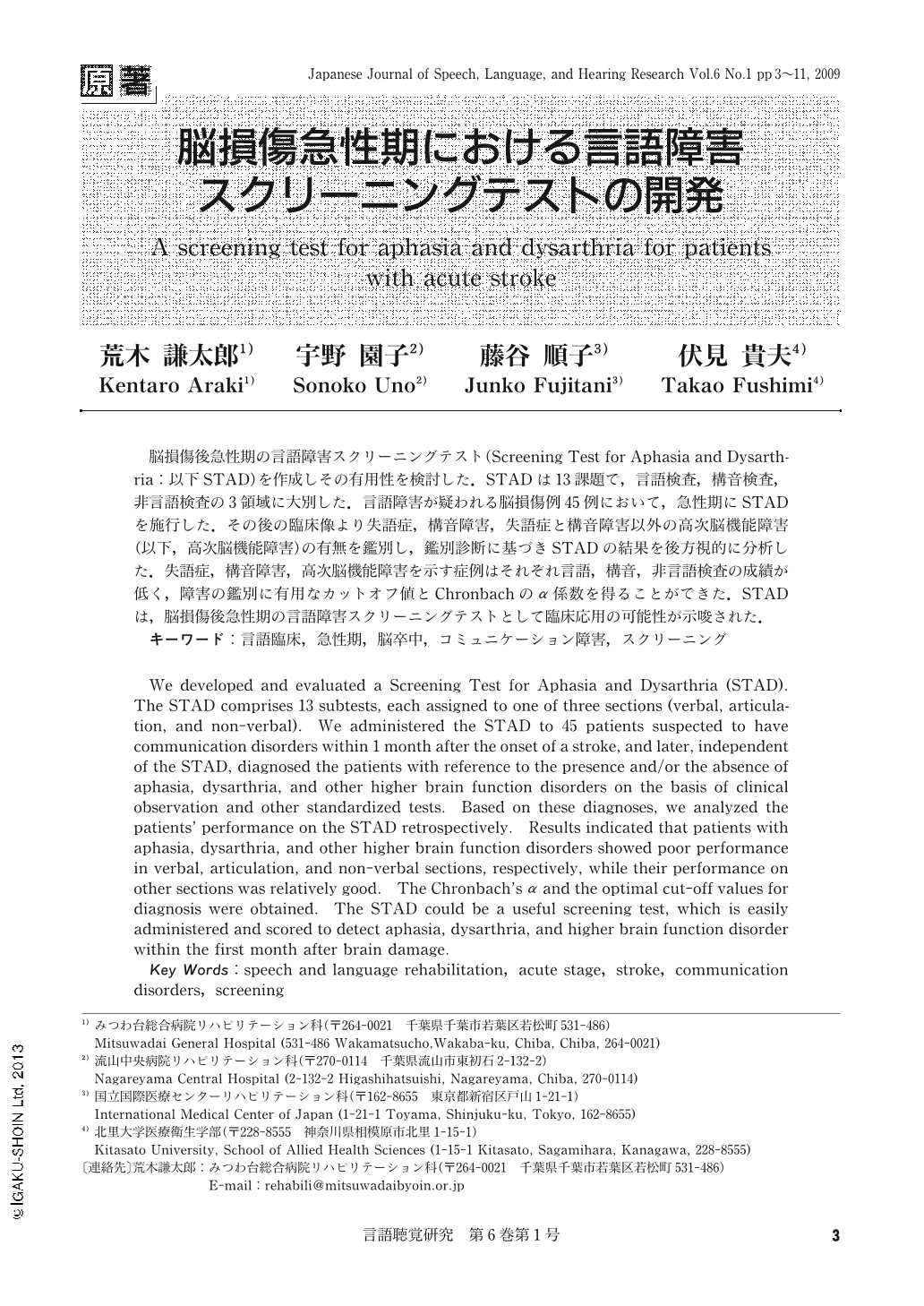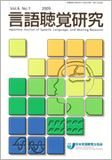Japanese
English
- 有料閲覧
- Abstract 文献概要
- 1ページ目 Look Inside
- 参考文献 Reference
脳損傷後急性期の言語障害スクリーニングテスト(Screening Test for Aphasia and Dysarthria:以下STAD)を作成しその有用性を検討した.STADは13課題で,言語検査,構音検査,非言語検査の3領域に大別した.言語障害が疑われる脳損傷例45例において,急性期にSTADを施行した.その後の臨床像より失語症,構音障害,失語症と構音障害以外の高次脳機能障害(以下,高次脳機能障害)の有無を鑑別し,鑑別診断に基づきSTADの結果を後方視的に分析した.失語症,構音障害,高次脳機能障害を示す症例はそれぞれ言語,構音,非言語検査の成績が低く,障害の鑑別に有用なカットオフ値とChronbachのα係数を得ることができた.STADは,脳損傷後急性期の言語障害スクリーニングテストとして臨床応用の可能性が示唆された.
We developed and evaluated a Screening Test for Aphasia and Dysarthria (STAD). The STAD comprises 13 subtests, each assigned to one of three sections (verbal, articulation, and non-verbal). We administered the STAD to 45 patients suspected to have communication disorders within 1 month after the onset of a stroke, and later, independent of the STAD, diagnosed the patients with reference to the presence and/or the absence of aphasia, dysarthria, and other higher brain function disorders on the basis of clinical observation and other standardized tests. Based on these diagnoses, we analyzed the patients' performance on the STAD retrospectively. Results indicated that patients with aphasia, dysarthria, and other higher brain function disorders showed poor performance in verbal, articulation, and non-verbal sections, respectively, while their performance on other sections was relatively good. The Chronbach's α and the optimal cut-off values for diagnosis were obtained. The STAD could be a useful screening test, which is easily administered and scored to detect aphasia, dysarthria, and higher brain function disorder within the first month after brain damage.

Copyright © 2009, Japanese Association of Speech-Language-Hearing Therapists. All rights reserved.


